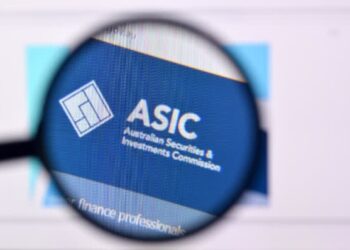ASIC announced on Tuesday, 27 September that it has published updated and expanded regulatory guidance in a bid to help financial firms remediate their customers “quickly and effectively”.
The move comes after the corporate watchdog revealed that it has overseen at least $5.6 billion in remediation for an estimated seven million Australian consumers for failures identified across the financial system, while around $1.6 billion is yet to be paid to an estimated 2.7 million consumers.
“Our guidance puts the onus on industry to get on with fair and timely remediations — returning the money they owe to wronged consumers,” ASIC deputy chair Karen Chester said.
“To date, ASIC has needed to oversee large-scale remediations to ensure affected consumers were treated fairly and received the compensation they were entitled to.”
As of June 2022, ASIC confirmed it was monitoring 36 remediation activities across financial advice, superannuation, credit and banking and insurance.
The updated guidance outlines a licensees’ legal obligation to operate efficiently, honestly and fairly, with ASIC saying it also includes industry requests for advice and clear guidance on remediations.
It comes after ASIC revealed last month that six of Australia’s largest banking and financial institutions — AMP, ANZ, CBA, Macquarie, NAB and Westpac — have paid or offered a total of $3.6 billion in compensation as at 30 June 2022 to customers who “suffered loss or detriment because of fees for no service misconduct or non-compliant advice”.
It also includes $438 million paid or offered between 1 January and 30 June 2022.
“The release of our expanded guidance, along with the updated Making it right field guide, delivers licensees all they need to achieve the right remediation outcomes on their own. It explicitly allows the use of assumptions, to help firms address knowledge gaps and accelerate remediation programs in a way that does not disadvantage consumers,” Ms Chester said.
“Licensees must also do better at identifying and remediating problems earlier to avoid the costly lag and drag of remediation. The common stumbling block we have seen across remediations is underinvestment in systems. This underinvestment has led to a trifecta of failures. First and foremost, in delivering on promises to consumers, second in identifying the failures and third in being able to remediate consumer loss in a timely way.”
“Going forward, while ASIC may need to intervene in some isolated cases, we cannot and should not oversee remediations in order for consumers to receive fair and timely outcomes.”




interesting the clients that were not “serviced” are still coming back to me saying they want help to track down the compensation payment.
I’ve just developed the ‘Industry Guide to activating compensation’
Step 1 – Provide no guidance to the industry
Step 2 – Introduce new rules that you retrospectively apply to the industry 10 years prior
Step 3 – Only apply the new rules to selected parts of the industry
Step 4 – Clap yourselves on the back an issue pay rises to everyone in your publically funded position.
I wouldn’t mind some compensation as a financial adviser for the pain and suffering we have endured over the past few years.
Particularly for all the damage done to the value of our businesses
According to Ms Levy, the government, Treasury, ASIC, FSC, industry associations and just about everyone else, you don’t matter and are dispensable.